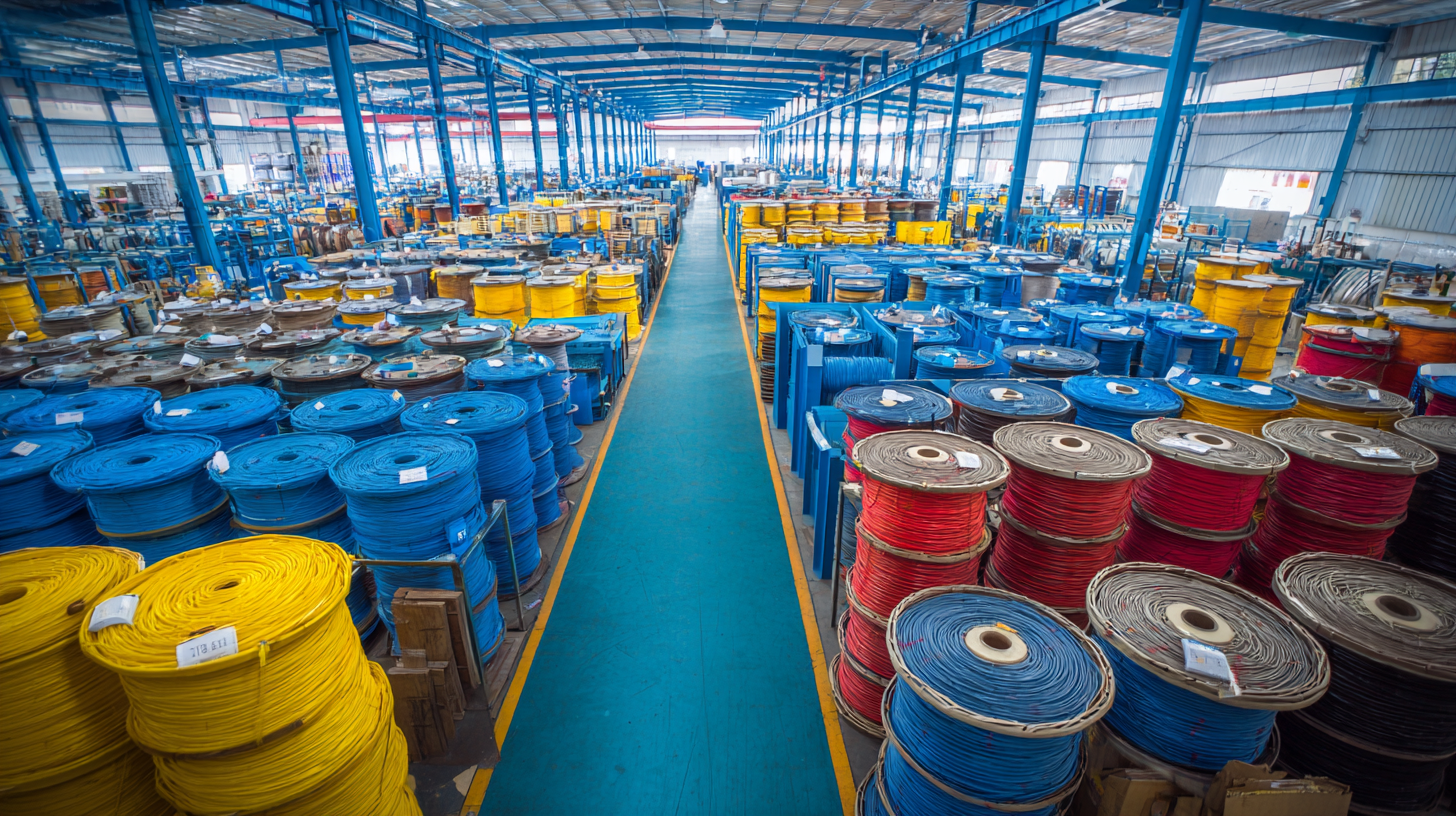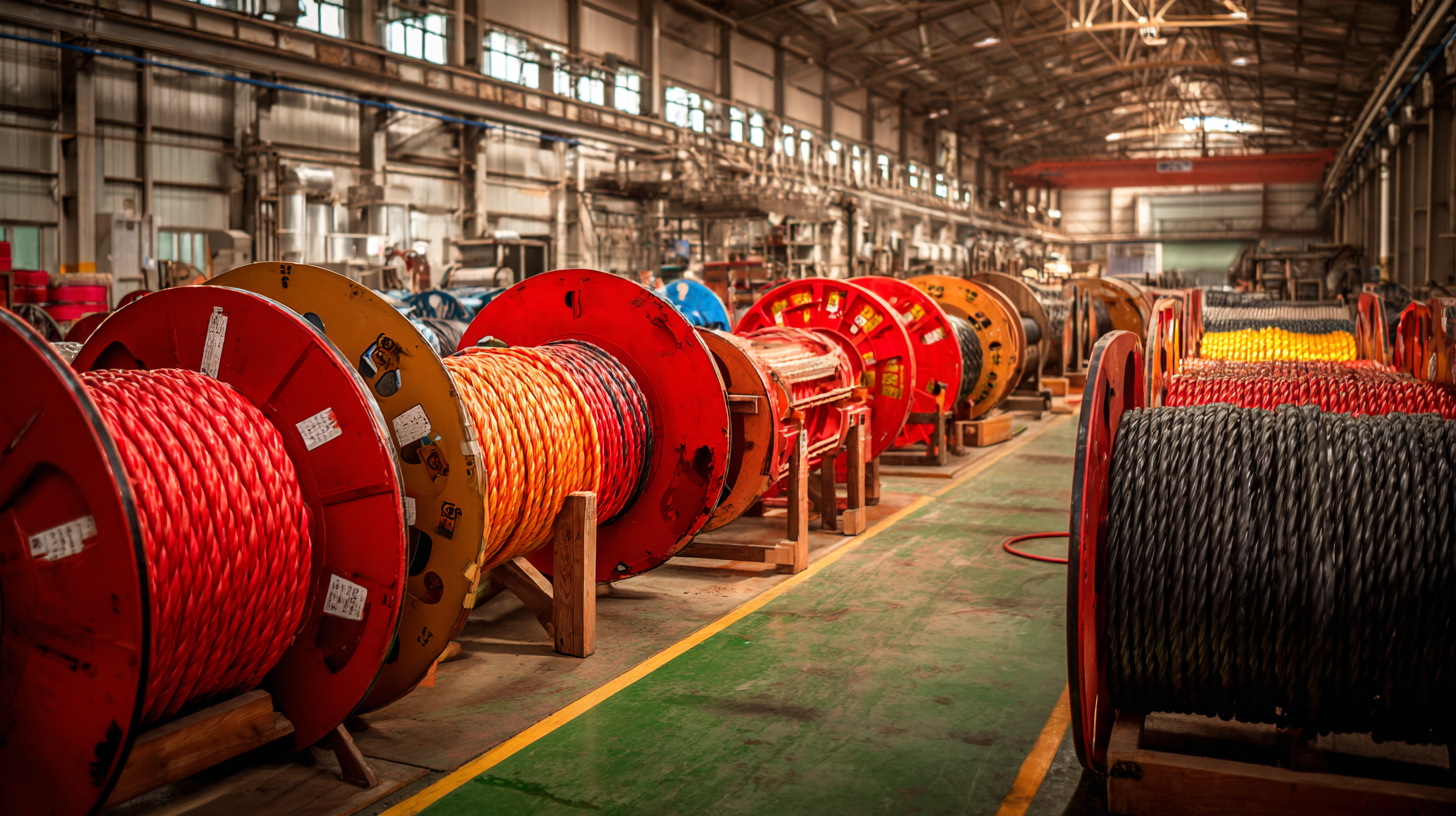China's Excellence in Best Low Voltage Cable Manufacturing Leading Export Powerhouse
In recent years, China's prowess in manufacturing low voltage cables has positioned it as a leading powerhouse in the global export market. According to a report by Research and Markets, the global low voltage cable market is projected to reach USD 247.2 billion by 2025, growing at a CAGR of 4.2%. China's manufacturers are not only meeting increasing domestic demands but are also exporting significant quantities of low voltage cables to international markets, comprising over 30% of global exports in this sector.

The country's advanced production techniques, robust supply chains, and cost-effective production processes have enabled it to dominate the low voltage cable landscape. This guide delves into the factors that contribute to China's excellence in low voltage cable manufacturing, highlighting key trends and insights within the industry that reinforce its standing as a global leader.
China's Dominance in Low Voltage Cable Production: A Statistical Overview
 China has established itself as a leading powerhouse in the manufacturing of low voltage cables, a critical component in the global energy transition. This dominance is reflected in the statistical overview of production, which highlights China's substantial market share and engineering capabilities. The country’s robust supply chain, skilled workforce, and technological advancements contribute to its ability to meet international demands efficiently.
China has established itself as a leading powerhouse in the manufacturing of low voltage cables, a critical component in the global energy transition. This dominance is reflected in the statistical overview of production, which highlights China's substantial market share and engineering capabilities. The country’s robust supply chain, skilled workforce, and technological advancements contribute to its ability to meet international demands efficiently.
To capitalize on this trend, companies worldwide must keep an eye on the fluctuating requirements of critical minerals that are essential for clean energy solutions. With the ongoing push for sustainable energy, the demand for these minerals, often sourced from specific regions, plays a vital role in the low voltage cable production process.
Tip: When exploring partnerships or sourcing materials, prioritize manufacturers who emphasize sustainable practices and have clear supply chain transparency regarding their critical mineral procurement. Additionally, being aware of geopolitical factors affecting mineral availability can help mitigate risks associated with supply chain disruptions.
Key Industry Players in China's Low Voltage Cable Manufacturing Sector
China has positioned itself as a leading player in the low voltage cable manufacturing sector, contributing significantly to the global market's expansion. The low voltage cable market is anticipated to grow from an estimated USD 161.75 billion in 2025 to USD 284.25 billion by 2035, reflecting a robust compound annual growth rate (CAGR) of 5.8%. This growth is fueled by China's commitment to innovation and quality in production, making it a preferred supplier for various industries worldwide.
Key industry players within China are leveraging advanced manufacturing technologies and investments in research and development to enhance the efficiency and safety of low voltage cables. The increasing demand for electricity and the modernization of electrical systems have bolstered the growth of this sector, with China's exports playing a vital role in meeting global energy needs. Additionally, as the focus on energy efficiency and safety intensifies, these manufacturers are poised to further enhance their market share, capitalizing on the ongoing trends in the construction and infrastructure domains.
Economic Impact of Low Voltage Cable Exports on China's GDP Growth
China's low voltage cable manufacturing sector has emerged as a significant contributor to the nation's economy, showcasing impressive growth rates that bolster its GDP. In 2022 alone, the country exported approximately $12.5 billion worth of low voltage cables, reflecting a 10% increase from the previous year. This surge is primarily driven by the global push for renewable energy and infrastructure development, where low voltage cables are essential for connecting and distributing energy.
The economic impact of these exports on China's GDP is profound. According to the National Bureau of Statistics of China, the manufacturing and export of low voltage cables contribute nearly 1.5% to the country's overall GDP growth. Furthermore, as domestic demand continues to rise alongside international sales, this sector is poised to create thousands of jobs, enhancing both economic stability and growth. Analysts predict that with ongoing advancements in technology and increased investment in infrastructure, China's low voltage cable industry could see its export value exceed $15 billion by 2025, further cementing its position as a leading export powerhouse.
China's Excellence in Best Low Voltage Cable Manufacturing Leading Export Powerhouse - Economic Impact of Low Voltage Cable Exports on China's GDP Growth
| Year | Total Exports (Million USD) | Low Voltage Cable Exports (Million USD) | GDP Growth Rate (%) | Percentage Contribution to GDP by Low Voltage Cable Exports (%) |
|---|---|---|---|---|
| 2018 | 2400 | 320 | 6.6 | 1.3 |
| 2019 | 2500 | 410 | 6.1 | 1.6 |
| 2020 | 2300 | 450 | 2.3 | 1.9 |
| 2021 | 2700 | 600 | 8.1 | 2.2 |
| 2022 | 2900 | 700 | 3.0 | 2.4 |
Technological Innovations Shaping the Future of Low Voltage Cable Manufacturing in China
China's advancements in low voltage cable manufacturing are closely tied to its commitment to technological innovations and sustainable practices, particularly in the context of rising renewable energy initiatives. As the global demand for clean energy sources, such as solar, wind, and hydropower, continues to surge, manufacturers are increasingly focusing on developing cables that can efficiently support these systems. This growing emphasis not only enhances operational efficiencies but also strengthens the country's position as a leading exporter in the cable industry.
In addition to supporting renewable energy, the medium voltage cables market is projected to experience significant growth, expected to reach around USD 89.38 billion by 2034. This expansion highlights the importance of high-quality cable materials in meeting the demands of modern infrastructure. As manufacturers innovate, there is a distinct trend toward using advanced materials that offer superior performance and durability, catering to the evolving needs of telecommunications and power sectors.
**Tips for Manufacturers:**
- Invest in R&D to explore new materials and technologies that improve cable performance and sustainability.
- Collaborate with renewable energy projects to align product offerings with market demands.
- Focus on quality control and certification processes to meet international standards, enhancing export opportunities.
China's Low Voltage Cable Manufacturing Innovations
Environmental Benefits of Low Voltage Cables: A Sustainable Manufacturing Perspective
Low voltage cables have gained significant traction in various industries, not only for their efficiency but also for their environmental benefits. According to a market report by Mordor Intelligence, the global low voltage cable market is expected to reach USD 139 billion by 2026, reflecting a substantial growth driven by the rising demand for renewable energy and sustainable infrastructure. China's manufacturing prowess in this segment has positioned it as a leading exporter, contributing to a greener world through advanced cable technologies that minimize energy loss and enhance system longevity.
A critical aspect of the sustainable manufacturing perspective is the use of eco-friendly materials and processes. Manufacturers are increasingly adopting techniques that reduce waste and energy consumption during production. For instance, the introduction of recyclable materials in low voltage cable production can lower carbon footprints by approximately 30%. Additionally, using advanced insulation methods enhances the energy efficiency of electrical systems, promoting a more sustainable energy landscape.
Tips for businesses aiming to enhance sustainability include selecting suppliers committed to environmentally friendly practices and investing in energy-efficient machinery. Furthermore, consider conducting regular assessments of cable performance and lifespan to optimize usage and reduce waste. As the industry evolves, prioritizing sustainability will not only comply with regulations but also appeal to increasingly eco-conscious consumers.

